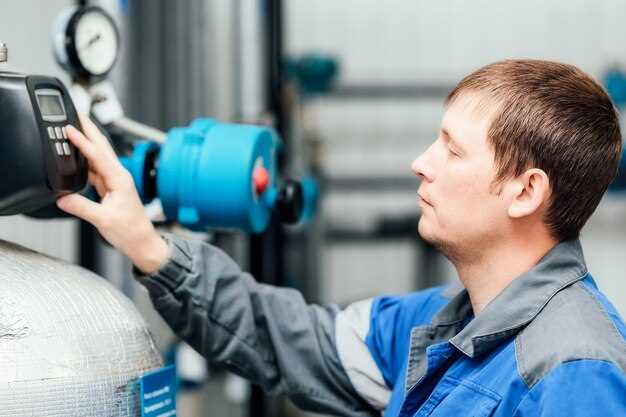
The Exhaust Gas Recirculation (EGR) valve plays a crucial role in modern vehicles by helping to control emissions. This component reduces the amount of nitrogen oxides (NOx) released into the atmosphere, which are harmful pollutants that contribute to smog and air quality issues. By recirculating a portion of the exhaust gases back into the engine’s intake, the EGR valve enables a more efficient combustion process that results in lower emissions.
In operation, the EGR valve functions by opening and closing at specific intervals based on engine demands and conditions. When the engine is under load, the valve opens to recirculate exhaust gases, which lowers the combustion temperature and consequently decreases the formation of NOx gases. The regulation of this process is essential for both environmental compliance and engine performance, showcasing the importance of the EGR system in contemporary automotive engineering.
Understanding the EGR valve’s function is vital for vehicle maintenance and troubleshooting. A malfunctioning EGR valve can lead to increased emissions, a decline in fuel efficiency, and potential engine performance issues. Regular checks and timely replacements ensure that the vehicle not only complies with emissions regulations but also operates optimally, making the EGR valve an integral component of any modern car’s engineering design.
Understanding the EGR Valve’s Role in Emissions Control

The EGR (Exhaust Gas Recirculation) valve plays a crucial role in controlling emissions produced by internal combustion engines. Its primary function is to recirculate a portion of the engine’s exhaust gases back into the intake manifold. This process reduces the formation of harmful nitrogen oxides (NOx) during combustion.
By introducing exhaust gases, the EGR valve lowers the combustion temperature, which is essential for minimizing NOx emissions. Elevated temperatures in the combustion chamber are a significant contributor to NOx production; hence, the EGR system effectively mitigates this issue by diluting the air-fuel mixture.
Furthermore, the EGR valve’s operation hinges on various parameters, including engine load and temperature. Modern vehicles often utilize electronic EGR systems that optimize performance based on real-time data, allowing for enhanced emissions control. This adaptability ensures compliance with strict environmental regulations while maintaining fuel efficiency.
The importance of the EGR valve extends beyond emissions reduction; it also plays a role in improving fuel economy. By reducing emissions, the EGR system permits engines to operate more efficiently, ultimately contributing to a cleaner environment and lower overall operational costs for vehicle owners.
In summary, the EGR valve is a vital component in emissions control systems, significantly reducing NOx emissions and promoting better fuel efficiency. Understanding its function is essential for appreciating the advancements in automotive technology aimed at achieving more sustainable transportation solutions.
Common Issues and Symptoms of a Failing EGR Valve

The Exhaust Gas Recirculation (EGR) valve plays a crucial role in controlling emissions and enhancing engine efficiency. However, like any mechanical component, it can develop issues over time. Identifying the symptoms of a failing EGR valve is essential for maintaining optimal vehicle performance.
One of the most common issues associated with a malfunctioning EGR valve is a noticeable decrease in engine performance. Drivers may experience reduced acceleration, poor responsiveness, or a general lack of power, especially during highway driving. This is often due to incorrect control of exhaust gases, which disrupts the air-fuel mixture.
Another symptom to watch for is an increase in exhaust emissions. A faulty EGR valve may allow excessive exhaust gases to escape into the atmosphere, leading to higher levels of harmful pollutants. This condition can result in your vehicle failing emissions tests, which can be both costly and inconvenient.
You may also notice rough idling or stalling when the engine is at a standstill. A failing EGR valve can cause fluctuations in engine vacuum, leading to inconsistent engine operation. This can make the vehicle feel unstable or difficult to control at low speeds.
Additionally, the check engine light may illuminate on your dashboard. Modern vehicles are equipped with diagnostic systems that monitor the EGR valve’s functioning. If these systems detect irregularities, they trigger a warning light, signaling the need for inspection and repair.
Lastly, you might experience an increase in engine temperature. A malfunctioning EGR valve can cause the engine to run hotter than normal due to improper exhaust gas recirculation. This can lead to overheating and potentially severe engine damage if not addressed promptly.
In summary, common issues such as decreased performance, increased emissions, rough idling, a check engine light, and overheating can indicate a failing EGR valve. Regular maintenance and timely repairs are essential for keeping your engine running smoothly and efficiently.
Maintenance Tips for Optimal EGR Valve Performance
To ensure the optimal performance of the EGR valve, regular maintenance is crucial. One key practice is to periodically inspect the EGR system for leaks or blockages. This helps in maintaining the efficient recirculation of exhaust gases, which is essential for reducing harmful emissions.
Cleaning the EGR valve is another important step. Over time, carbon deposits can accumulate, obstructing proper function. Utilizing an appropriate cleaning solution periodically can help keep the valve free from buildup and maintain its responsiveness.
Check the electrical connections and hoses related to the EGR valve. Any signs of wear, cracks, or disconnections can lead to malfunctions, affecting overall vehicle emissions. Ensure these components are secure and in good condition to facilitate effective operation.
Regular engine diagnostics can also help identify early signs of EGR valve issues. Employing diagnostic tools can monitor the system’s performance and detect any abnormalities that may compromise emissions control.
Finally, adhering to the vehicle’s service schedule is vital. Following manufacturer recommendations on maintenance intervals can prevent potential problems with the EGR system and help uphold stringent emissions standards.

